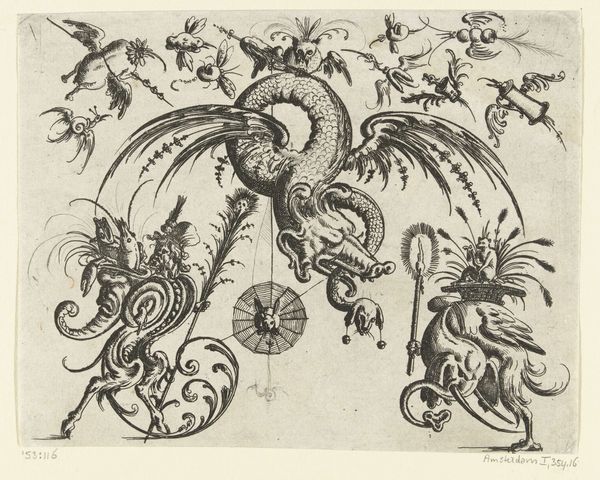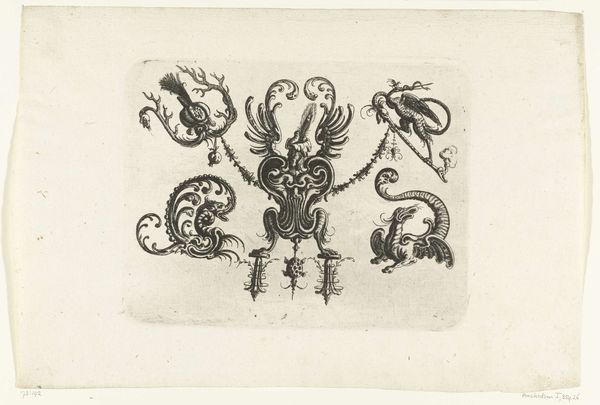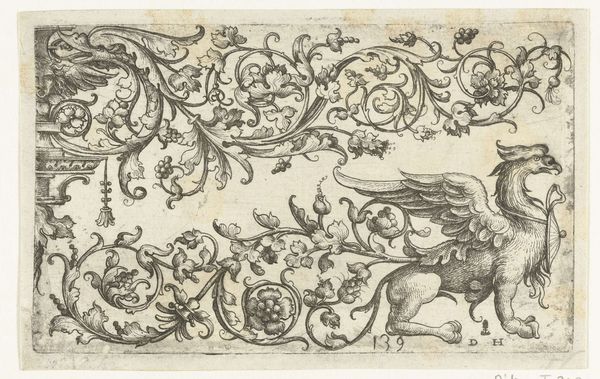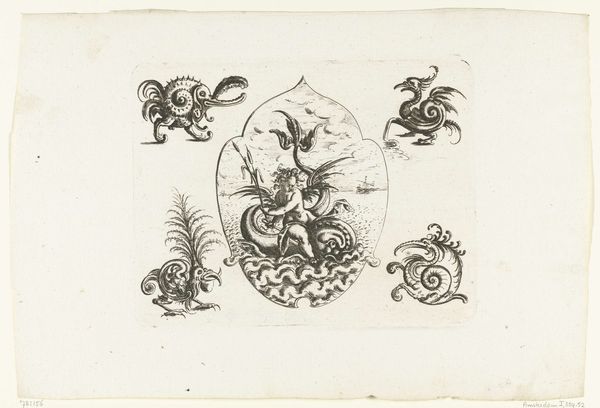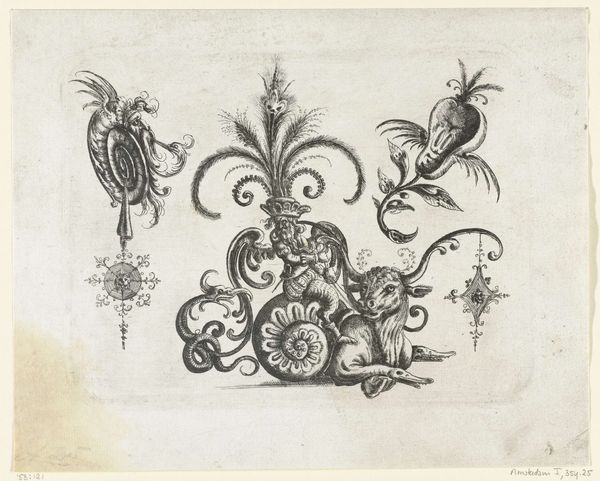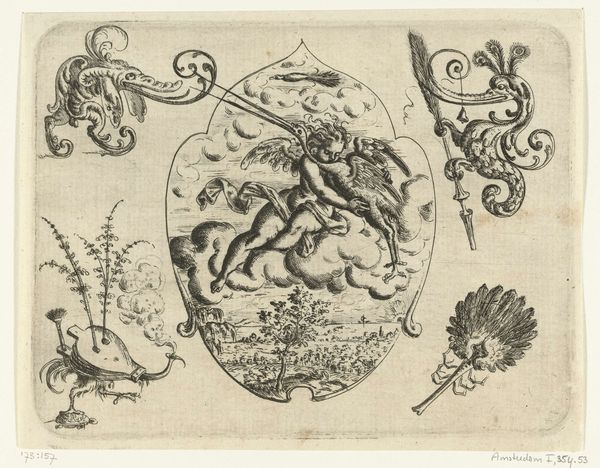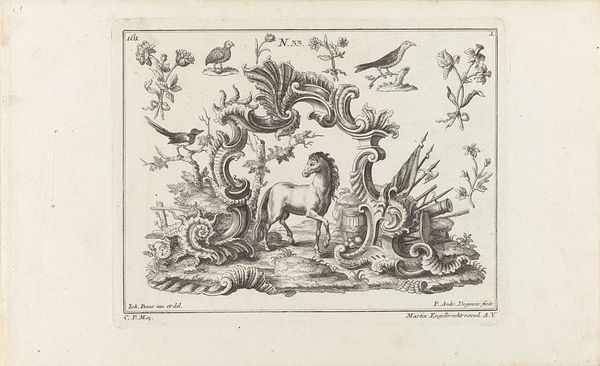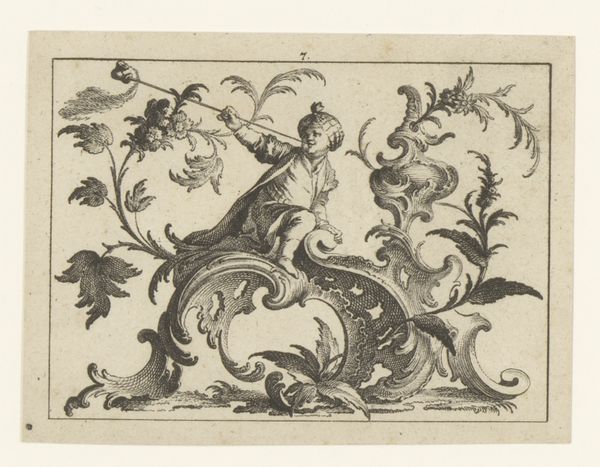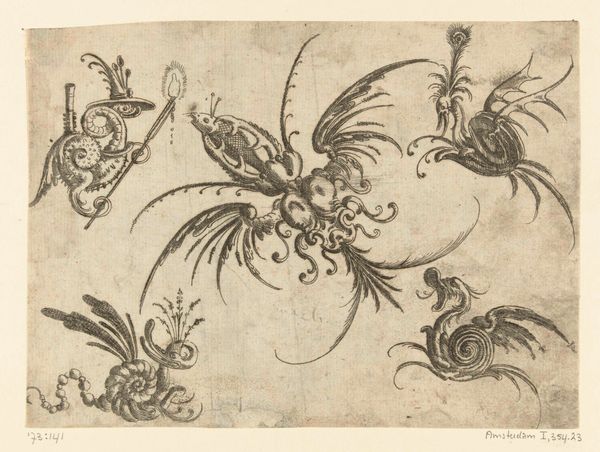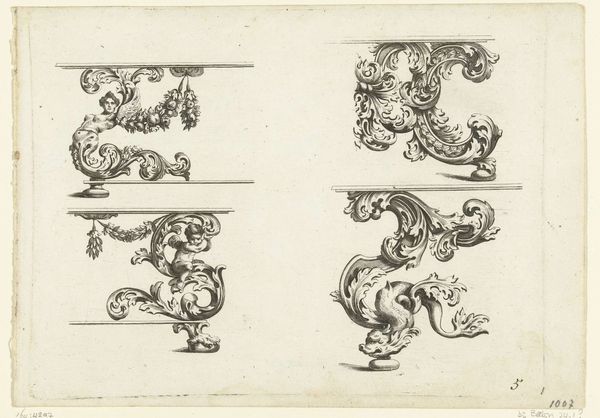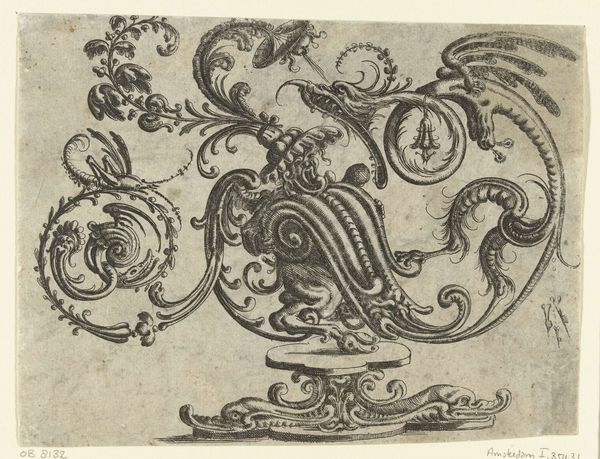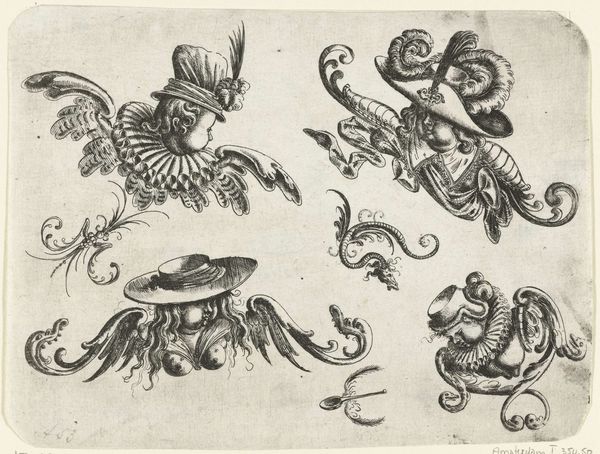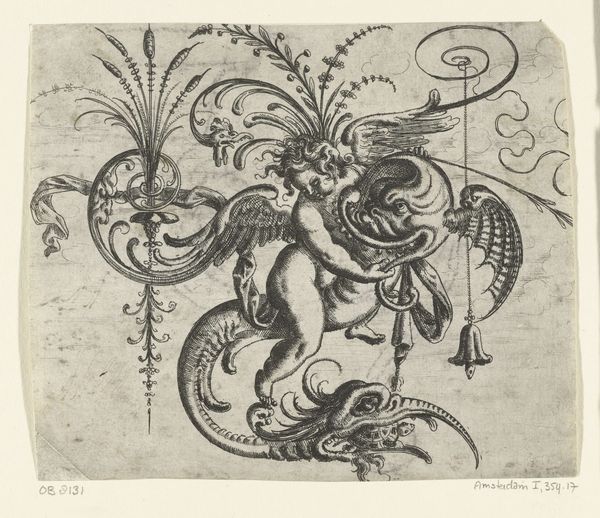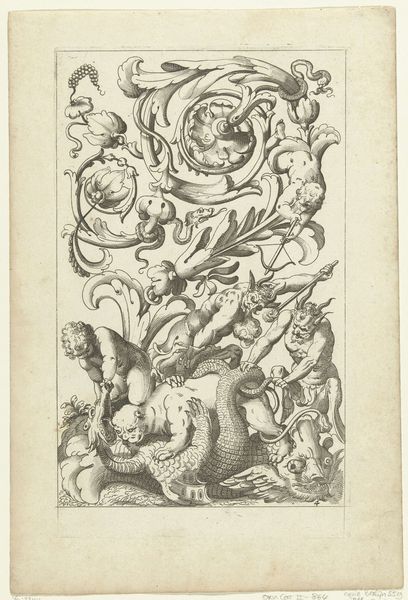
metal, engraving
#
baroque
#
metal
#
mannerism
#
engraving
Dimensions: height 149 mm, width 184 mm
Copyright: Rijks Museum: Open Domain
Curator: Here we have "Four Cherubs," an engraving likely dating between 1573 and 1610, attributed to Christoph Jamnitzer. What are your immediate thoughts? Editor: My first thought is, are these really cherubs? They have such stern, almost pompous expressions! And are those elaborate hats they're wearing? It's as if a gaggle of serious babies are off to a very important, yet very tiny, business meeting. Curator: Precisely! Jamnitzer, deeply entrenched in the Mannerist and early Baroque styles, delights in ornamentation and complex design. These are not your sweet, rosy-cheeked cherubs. Look at the swirling lines, the decorative plumes and frills surrounding the central cherubic forms. It's about creating visual interest and sophisticated artistry. Editor: It is indeed very sophisticated, almost dizzying. The balance between the detail and the almost unsettling seriousness of the faces creates a really intriguing tension. Is it meant to be satirical, perhaps? Curator: While satire can't be ruled out, context is helpful here. Jamnitzer worked primarily with metalwork. Engravings like these would serve as templates or inspirational sources for artisans creating elaborate silverware, jewelry, or even architectural details. It's design blueprint intended for practical application and decorative flourish. Editor: That practical application makes so much sense now. It takes it away from just being an amusing print and makes it part of this fascinating world of craftsmanship, of transforming two-dimensional sketches into elaborate three-dimensional objects. It becomes part of a much bigger artistic lifecycle, and it shows how the art of design plays an outsized, indispensable role in that world. Curator: Precisely! Thinking of "Four Cherubs" in the context of decorative metalwork of the period reorients the discussion, offering deeper insights into both its aesthetic and cultural functions. Editor: Well, I’ll never look at cherubs the same way again. And perhaps I'll have more patience when encountering excessive ornamentation – you’ve shifted my whole paradigm, even beyond these cheeky infants!
Comments
No comments
Be the first to comment and join the conversation on the ultimate creative platform.
